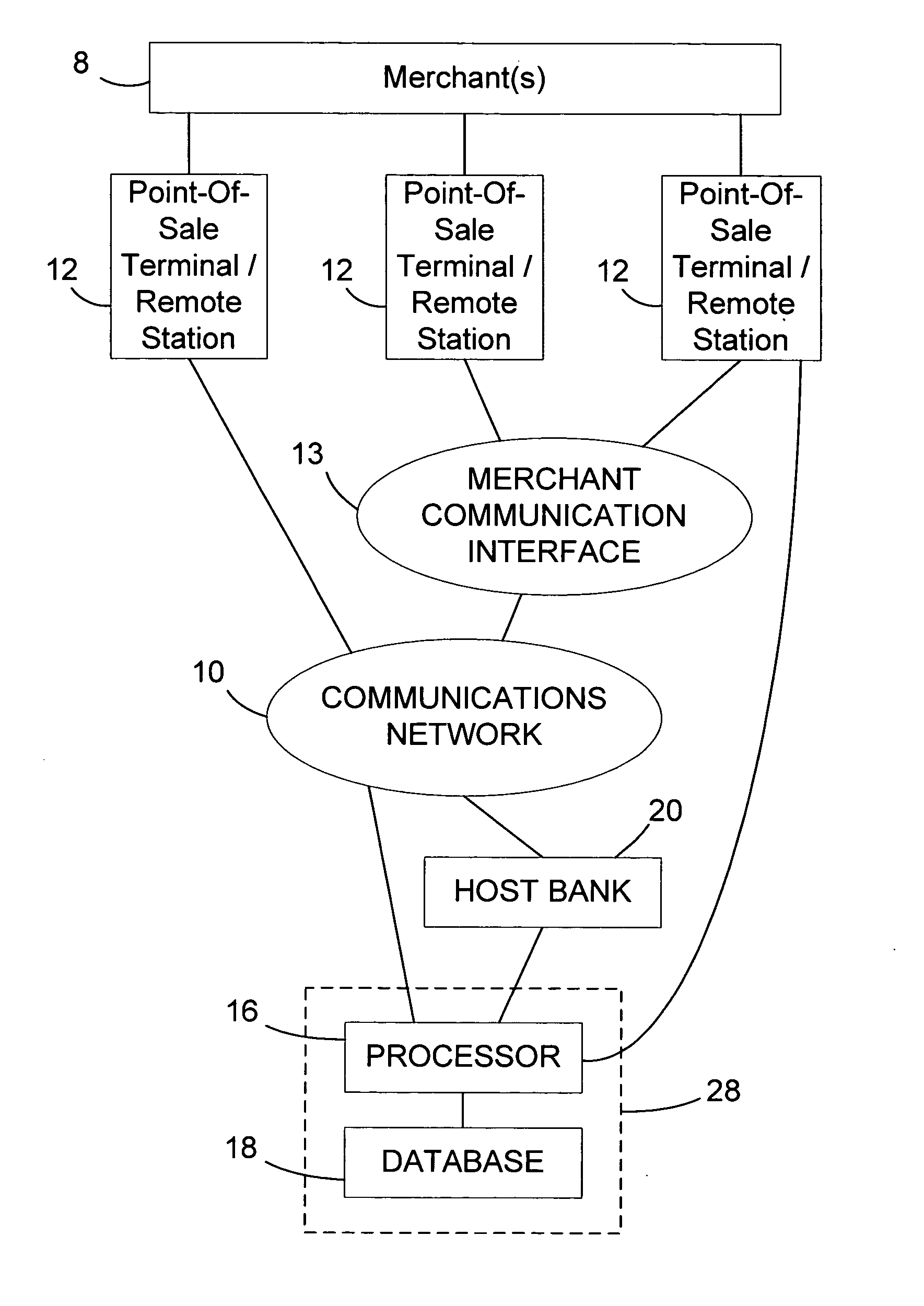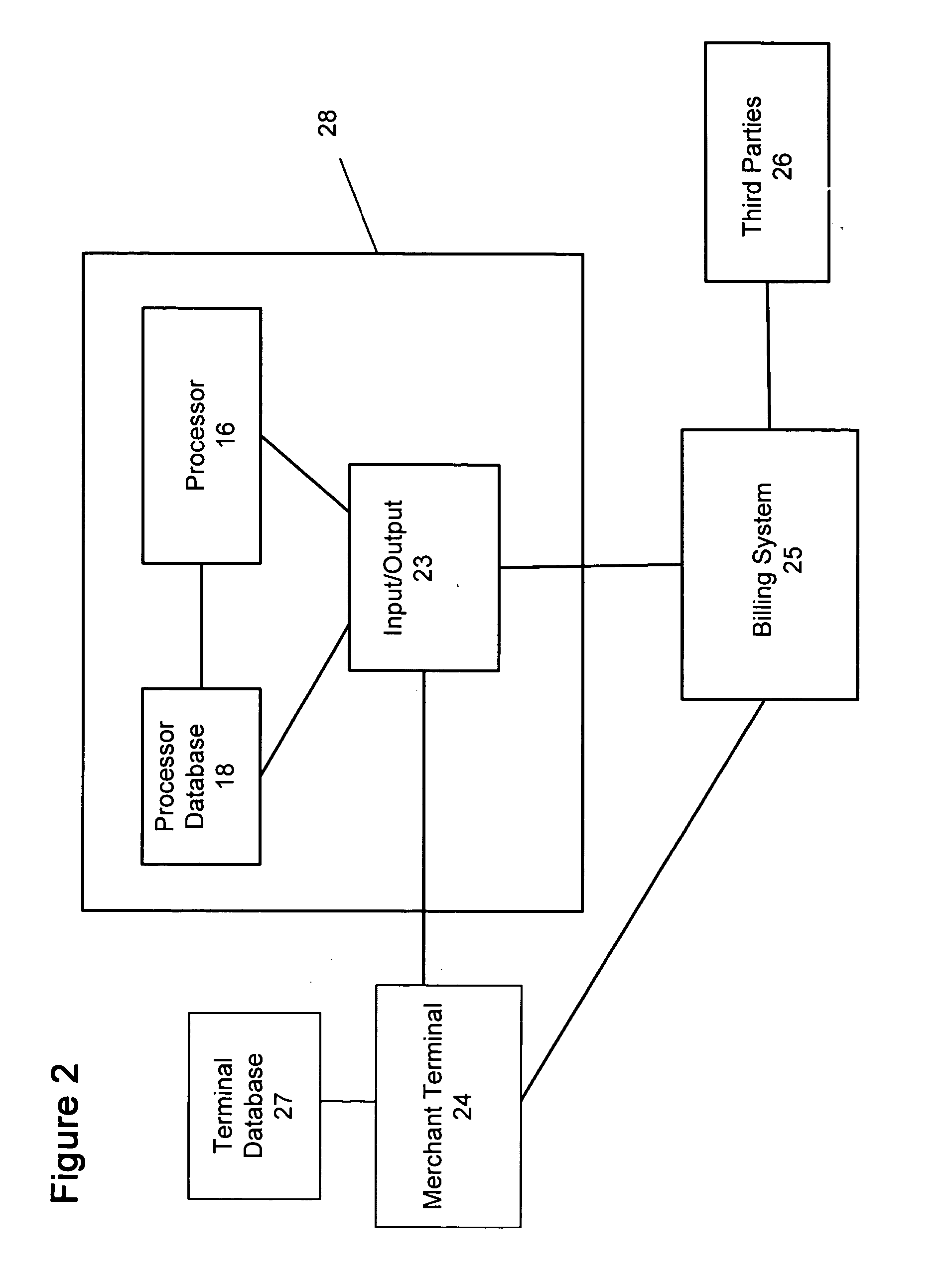Electronic delivery systems, such as those involving communication networks, present unique challenges in confirming the delivery of
electronic data.
However, because errors can sometimes occur, some transactions may never actually be completed.
For instance, a PIN may be delivered to a merchant terminal, but the merchant terminal may fail to deliver the PIN to the customer.
Internal and external problems with the merchant terminal, central processor, and / or any communication network between them can cause difficulties in PIN delivery, resulting in a greater need for confirming that a transaction was successfully completed prior to billing.
The merchant terminal might not receive a PIN transmitted from the central processor when, for instance, a break in the communication network or a malfunction at the merchant terminal disrupts delivery of the PIN to the merchant or customer.
A related problem is that a disruption in the communication network may cause a central processor to deem a transaction unsuccessful even though a PIN was successfully delivered to a customer, and the merchant or customer should therefore be billed.
Another related issue is identifying the specific PIN transaction to be confirmed when a central processor or merchant terminal handles a series of transactions involving a series of different PINs, or a single transaction with multiple PINs.
These and other errors may cause a merchant (or central processor or other
billing system) to fail to recognize that a transaction was completed even though it received a PIN and delivered it to a customer.
Without confirming that a billable event occurred, such as that a PIN or other product was delivered to the proper party, there may be errors in charging purchasers for successful purchases.
Largely due to this possibility of errors and the need for accurate accounting records, billing systems typically attempt to confirm that a transaction successfully took place before billing the purchaser.
The basic problem is that the central processor must receive confirmation from the merchant terminal that a billable event occurred.
However, this method has a similar drawback to the simple method: a disruption in a communication, such as the confirmation message, could prevent the central processor from receiving confirmation that the merchant terminal received the PIN (or that the merchant terminal delivered the PIN to the customer).
In such a case, the central processor would therefore be unable to determine whether to bill the merchant (or customer, as the case may be).
For instance, a more complicated
system might require that the merchant release the PIN to a requesting customer (the billable event) only after it receives confirmation that the central processor “knows” the PIN was successfully delivered to the merchant.
However, these additional steps do not ultimately solve the underlying problem.
A failure to communicate this last step highlights the defect of this method.
Thus, while the additional steps might provide some useful information, they do not overcome the fundamental problem, and they additionally increase the cost and complexity of the process.
However, if the central processor does not receive the initial confirmation
receipt, the central processor still cannot determine whether the merchant terminal received the initial PIN transmission (the billable event).
While this
system will tend to avoid billing customers who never received a PIN, it will fail to bill for successful PIN deliveries (billable events) when errors prevent the central processor from receiving the final confirmation message, namely, a “confirmation that the confirmation of the confirmation was successfully received.”
The fundamental problem in any system of this type is sometimes called an “infinite
acknowledgement” or “
infinite loop” problem because no matter how many times confirmation messages are communicated back and forth between two parties, the first party can never be certain that the second party received the last communication.
The problem is that the communication from the merchant to the central processor confirming the billable event might fail.
However, because of communication errors, the prior transaction identifier received by the processor will occasionally fail to match the processor's records, such as when the merchant terminal fails to receive a PIN transmitted from the central processor due to an error.
Other questionable transactions may require further communication with the merchant, customer, or third parties, or other investigation.
The primary
disadvantage of this method is the time
delay until the end of the billing cycle.
During the passage of time, the information necessary to determine whether a given transaction occurred may disappear or fade, leading to increasingly inaccurate billing records and increasingly costly reconciliation efforts.
Further, delays in billing cause a loss in the time value of money since delayed bills may result in delayed payments.
 Login to View More
Login to View More  Login to View More
Login to View More 


